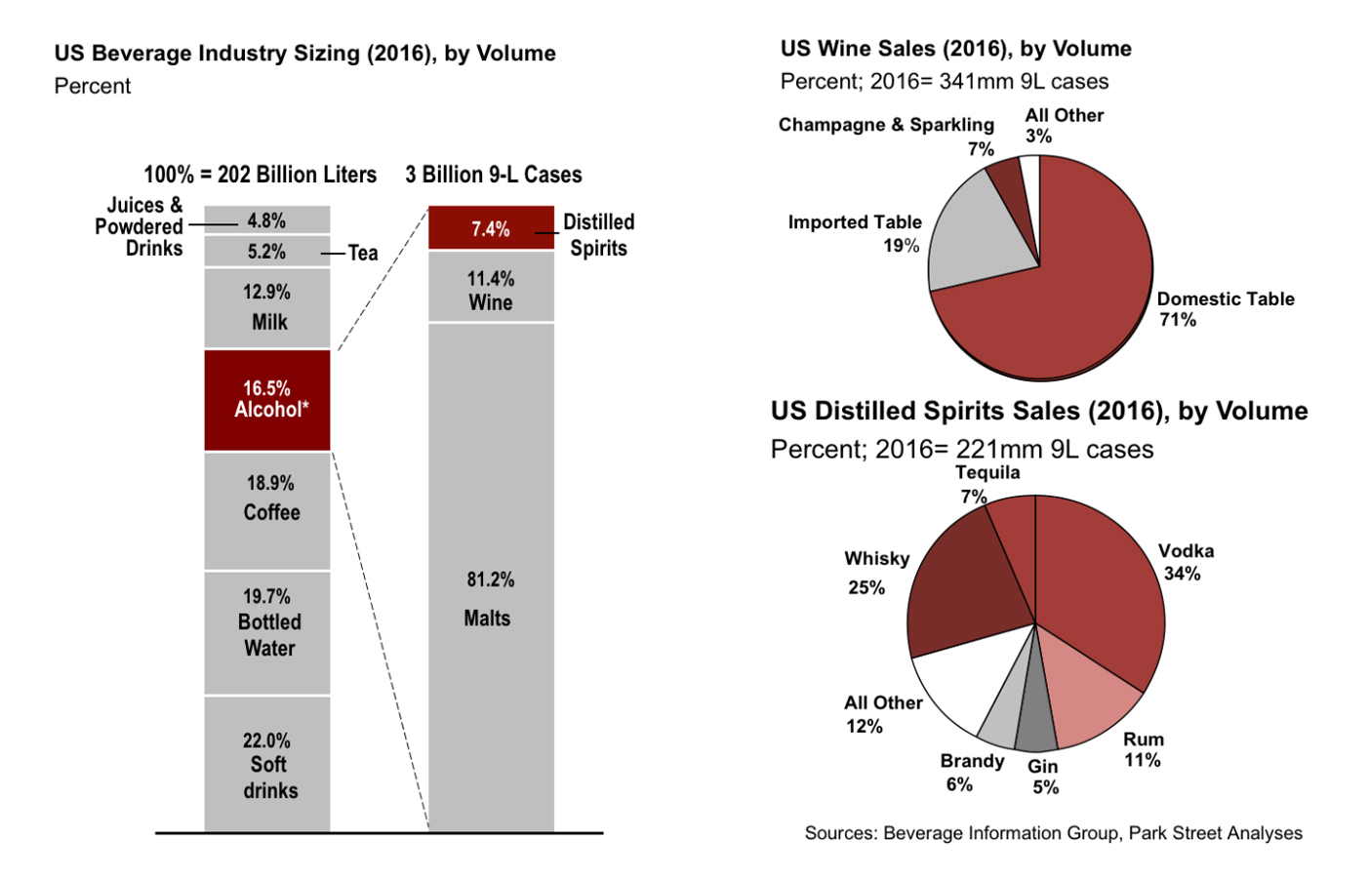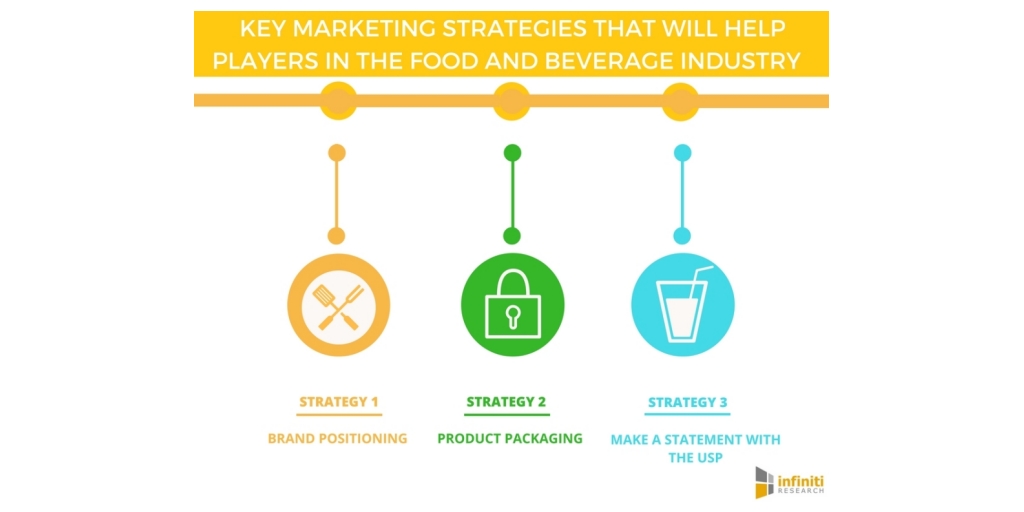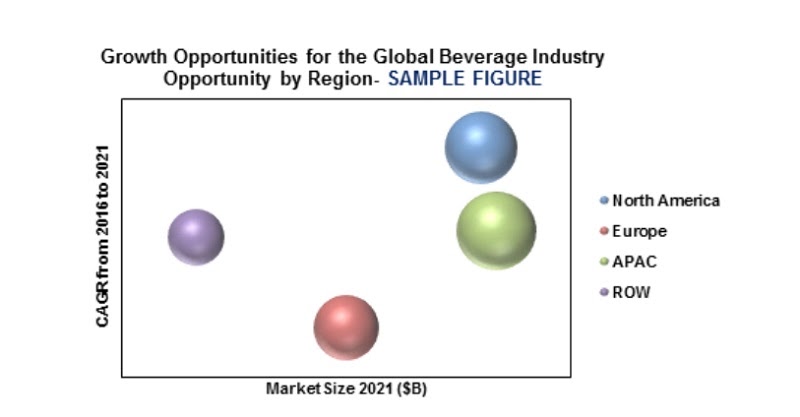Describe the Market Structure of the Beverage Industry
The number of players in the market. XX Breweries In Botswana.

Omega 3 Market Scope Size Share And Market Forecast To 2025 Marketsandmarkets Segmentation Core Competencies Innovation Technology
The Beverage industry is a high profitable industry providing with 60 billion in United States.

. The report segments the global alcoholic beverages market based on type distribution channel and region. The growing population and rise of the middle class particularly in emerging markets are key growth drivers for non-alcoholic beverage. The beverage industry also known as the drink industry manufactures drinks and ready-to-drink products.
The extent of product differentiation. The market is dominated by these two industry leaders with a total market share of 72. The global impact of COVID-19 has been unprecedented and staggering with beer witnessing a negative impact on demand across all regions amid the pandemic.
The distributional segmentation of beer includes on-trade and off-trade channels. One of the largest food processing industries is the beverage industry. The nature of costs of inputs.
1 Food and Beverages. Vertical Integration A vertical integration is when a firm extends. 3 Worldwide Popular Soft Drinks.
31 Coca-cola Beverage Industry. Porters Five Forces Bargaining Power of Buyers. Both the companies have been competing strongly against each other for decades.
Get access to Reports from 10000 trusted sources with ReportLinker. The industry contains many companies that are well established in this field and. On the basis of type the market is classified into beer distilled spirits wine and others.
Examples are bottled water soft drinks energy drinks milk products coffee and tea-based products nutritional beverages and alcohol. It is common to differentiate these markets across the following seven distinct features. Approximately 48 of the people drink more than two glasses of beverages per day.
Each firm has an identical cost structure such that long run average cost is minimized at an output of 10 units qi10. The global beer market is segmented by type segmented into lager ale and other product types. A perfectly competitive industry has a large number of potential entrants.
The beverage industry is traditionally a market with specific high demands regarding hygiene and its related technologies. 32 Pepsi Beverage Industry. 57 Beverage Industry Statistics and Growth Trends.
The turnover of customers. THE STRUCTURE OF THE BEVERAGE ALCOHOL INDUSTRY This Report provides a summary description of the beverage alcohol industry its nature and scope. Recent financial results from T Brewery Holdings indicate that the organization as a whole has continued to perform exceptionally well on the back of a buoyant Botswana economy.
There is a growing interest in food and beverage industries due to increasing consumer demand around the world. Alcoholic and nonalcoholic drinks. Describe the structure of the interior surface of the small intestine and explain how this structure relates to its function.
According to the Bacardi Cocktail Trends Report in January 2022 in partnership with The Future Laboratory approximately 58 of consumers globally are shifting to. Ad Download Beverage Reports of any country with ReportLinker. In the carbonated soft drinks industry Coke Cola and Pepsi Co are the biggest players in the market for aerated beverages.
You want to start a company and are trying to decide between two different. Industry Overview As per market research the non-alcoholic beverage industry in India stood at US25 billion in 2015. Because of this fact an enormous amount of the customers are targeted by the firms and companies.
The beverage industry is a broad categor that includes non-alcoholic and alcoholic drinks. The market is estimated to grow at a CAGR of over 17 in between the period from 2016 to 2020 to reach US49 billion by 2020. We predict the direction of the industry based on research here.
Analyze and compare the characteristics of all market structure with respect to the given sectors. 41 Food and Beverage Companies Worldwide. The key players in this industry are.
Further segmentation has been done on the categories of beer which include standard beer and premium beer. One such typical example is the beverages industry. Various types of beer include ale lager and hybrid whereas distilled spirits include rum whiskey vodka and others.
Usually no one firm or individual controls the entire value chain but some firms may decide to integrate horizontallyby buying up competing firms or increasing capacityor vertically by buying facilities that tend to come earlier or later in. Turnover grew by 42 whilst operating profit is. 322 Lipton Beverage Company.
The market is projected to grow from USD 76817 billion in 2021 to USD 98948 billion in 2028 at a CAGR of 368 during the 2021-2028 period. It offers a basic overview of economic trade and development aspects as well as how some of these relate to public health issues. 321 RedBull Beverage Industry.
Soft drinks are the largest beverage market segment in the global market and are forecasted to reach approximately 550bn in 2013 business insights nd. Many firms in the beverage industry have integrated Porters five forces model into their marketing strategies with the aim to competitively positioning their products and services in the market against rivals firms Porter 1985. Different level of bargaining power exist among the group of buyers.
Cokes market share is 42 and Pepsis 30. The industrys buyer structure. The food and beverage processing sector are classified into two main groups.
Different market structures are prevailing in our different sectors like agriculture power supply transport industry cement industry restaurants etc. The global beer market size was USD 74384 billion in 2020. The beverage industry is a case study which.
It presents an analysis of current trends such as industry consolidation. The following figures depict the growth of non-alcoholic beverage industry in India from 2011 to. The global non-alcoholic beverages market size was valued at USD 8331 billion in 2021 and is expected to expand at a compound annual growth rate CAGR of 56 from 2022 to 2030.
Several characteristics of a market determine its structure.

Four Dominant Marketing Strategies For Food And Beverage Industry Players To Follow Infiniti Research Business Wire

Alcoholic Beverage Market Overview In The United States

Beverage Industry Overview A Brief Analysis For Business Owners Tan Do

Beverage Industry Overview A Brief Analysis For Business Owners Tan Do
Comments
Post a Comment